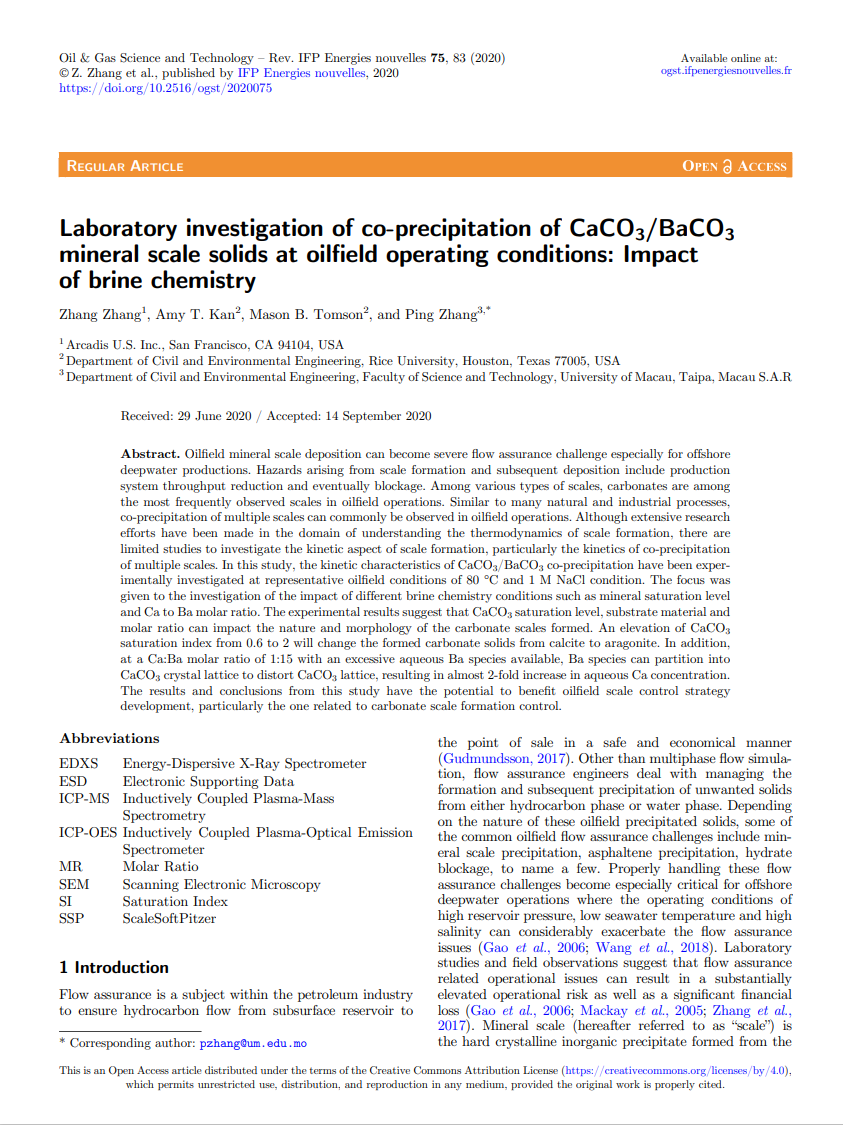Oilfield mineral scale deposition can become severe flow assurance challenge especially for offshore deepwater productions. Hazards arising from scale formation and subsequent deposition include production system throughput reduction and eventually blockage. Among various types of scales, carbonates are among the most frequently observed scales in oilfield operations. Similar to many natural and industrial processes, co-precipitation of multiple scales can commonly be observed in oilfield operations. Although extensive research efforts have been made in the domain of understanding the thermodynamics of scale formation, there are limited studies to investigate the kinetic aspect of scale formation, particularly the kinetics of co-precipitation of multiple scales. In this study, the kinetic characteristics of CaCO3/BaCO3 co-precipitation have been experimentally investigated at representative oilfield conditions of 80 oC and 1 M NaCl condition. The focus was given to the investigation of the impact of different brine chemistry conditions such as mineral saturation level and Ca to Ba molar ratio. The experimental results suggest that CaCO3 saturation level, substrate material and molar ratio can impact the nature and morphology of the carbonate scales formed. An elevation of CaCO3 saturation index from 0.6 to 2 will change the formed carbonate solids from calcite to aragonite. In addition, at a Ca:Ba molar ratio of 1:15 with an excessive aqueous Ba species available, Ba species can partition into CaCO3 crystal lattice to distort CaCO3 lattice, resulting in almost 2-fold increase in aqueous Ca concentration. The results and conclusions from this study have the potential to benefit oilfield scale control strategy development, particularly the one related to carbonate scale formation control
